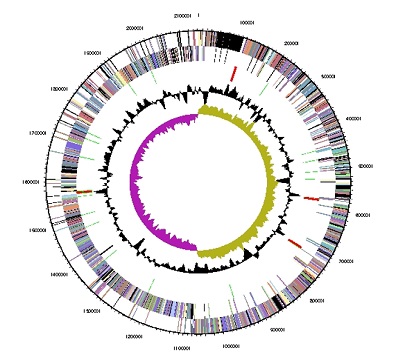User:S4355889
Name: Callum Le Lay
Bench ID: C
Date: 31/08/2016
[1]
Classification
Higher order taxa
Bacteria - Terrabacteria group - Firmicutes - Negativicutes - Veillonellales - Veillonellaceae - Veillonella
Species
Type strain: Prevot Te 3 = ATCC 10790 = DSM 2008 = JCM 12972
Species name and type strain (consult LPSN http://www.bacterio.net/index.html for this information)
Description and significance
Discovered in #### by french biologist 'Mr Veillonella', Veillonella parvula is a gram negative bacteria commonly found in the oral cavity and 'vagina'. V. parvula is anaerobic, auxotrophic, lactate fermenting and cocci shaped. The species is quite small at ### (E.coli for comparison) which is why it is known as parvula, which is 'very small' in 'greek'.
Give a general description of the species (e.g. where/when was it first discovered, where is it commonly found, has it been cultured, functional role, type of bacterium [Gram+/-], morphology, etc.) and explain why it is important to study this microorganism. Examples of citations [1], [2]
Genome structure
Select a strain for which genome information (e.g. size, plasmids, distinct genes, etc.) is available.
Cell structure and metabolism
Cell wall, biofilm formation, motility, metabolic functions.
Ecology
Aerobe/anaerobe, habitat (location in the oral cavity, potential other environments) and microbe/host interactions.
Pathology
Do these microorganisms cause disease in the oral cavity or elsewhere?
- Periodontitis and dental caries
- Bacterial vaginosis
- Osteomyelitus
- Endocarditis
Application to biotechnology
Bioengineering, biotechnologically relevant enzyme/compound production, drug targets,…
Current research
Summarise some of the most recent discoveries regarding this species.
References
References examples
- ↑ MICR3004
Notes
TEMPORARY: TO BE DELETED AFTER FINISH
This page was written by Callum Le Lay for the MICR3004 course, Semester 2, 2016

